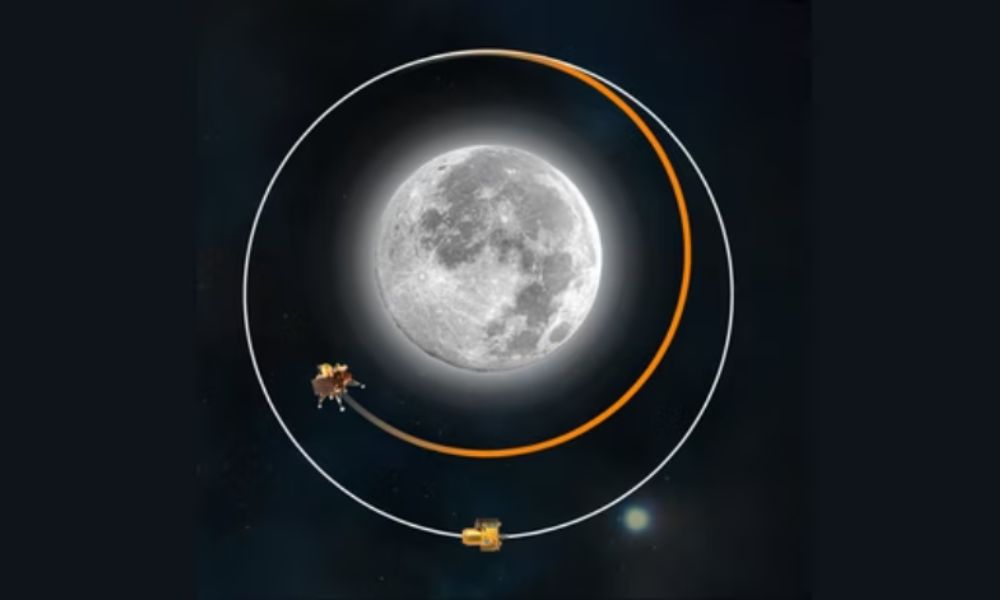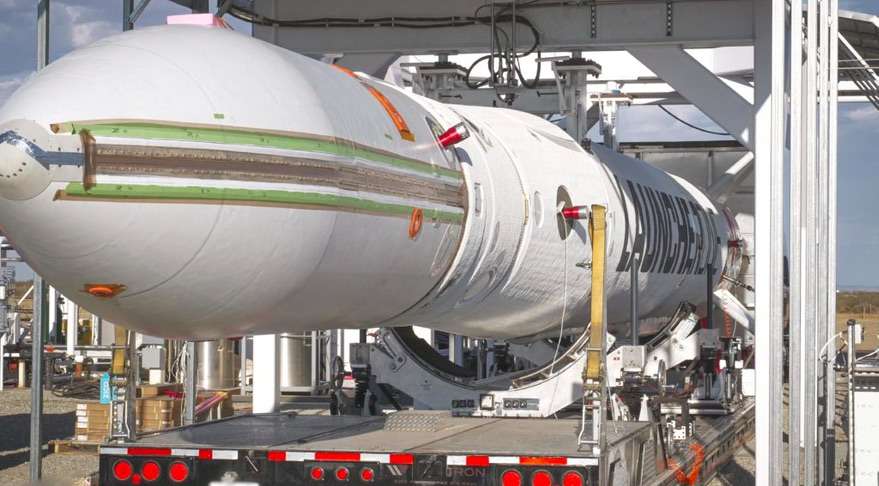Chandrayaan 3: Vikram Lander's Deboosting for Lunar Landing
On August 18, 2023, significant developments in India's Chandrayaan 3 lunar mission set the stage for an exciting lunar landing attempt. The Vikram Lander, accompanied by the Pragyan rover, achieved a crucial milestone by separating from the propulsion module. This achievement marks a vital step towards a safe and soft landing on the Moon's south pole, scheduled for August 23. Let's delve into the details of the mission's progress and its key objectives.
Lander's Orbital Adjustment for Lunar Landing Attempt
After the successful separation from the propulsion module, the Vikram Lander is now gearing up for a critical “deboosting” maneuver. This process involves slowing down the lander's speed to position itself in a strategic orbit configuration. The goal is to achieve a lunar orbit where the Perilune (closest point to the Moon) is at 30 km and the Apolune (farthest point from the Moon) is at 100 km. This configuration will provide the optimal starting point for the soft landing attempt on the Moon's south polar region.
TO READ MORE FOR DETAILED STORY: Chandrayaan-3's Vikram Detaches, Luna-25 Orbits
Chandrayaan 3's Objectives
The Chandrayaan 3 mission encompasses several key objectives:
- Safe and Soft Landing Demonstration: One of the primary objectives of Chandrayaan 3 is to demonstrate a successful soft landing on the lunar surface. This delicate maneuver requires precise control to ensure a gentle touchdown.
- Rover Roving Demonstration: The mission also aims to showcase the mobility and capabilities of the Pragyan rover, which will explore the lunar terrain, perform scientific experiments, and gather valuable data.
- Execution of In-Situ Scientific Experiments: The mission intends to carry out scientific experiments directly on the lunar surface. These experiments could yield insights into the Moon's composition, geology, and other important aspects.

TO READ MORE FOR DETAILED STORY: Chandrayaan-3 Reaches Lunar Orbit, Lander to Separate.
Upcoming Lunar Landing Attempt
As the Vikram Lander continues its orbital adjustments, the final orbit will be fine-tuned to have a Perilune at 30 km and an Apolune at 100 km. This orbit will serve as the launchpad for the highly anticipated lunar landing attempt, scheduled for August 23. If successful, the lander and rover will make history by exploring the Moon's uncharted south pole region.
Vikram Lander must be within the landing speed limits of …
Vikram Lander's touchdown specifications
- Landing craft maximum mass at Lunar touchdown: 800 kg
- Vertical Velocity: ≤ 2 m/sec
- Horizontal Velocity: ≤ 0.5 m/sec
- Slope: ≤ 12 degrees
Touchdown test limits for Vikram Lander
- Vertical Velocity: ≤ 3.0 m/sec (10.8km/hr)
- Horizontal Velocity: ≤ 1.0 m/sec
- Slope: ≤ 12 degrees
Chandrayaan-3 mission detailed timeline
- July 6: ISRO announces Mission Chandrayaan-3 launch date of July 14 from Sriharikota's second pad.
- July 7: Successful vehicle electrical tests completed.
- July 11: A comprehensive 24-hour ‘Launch Rehearsal' simulating the entire launch process concludes.
- July 14: LVM3 M4 vehicle launches Chandrayaan-3 into designated orbit.
- July 15: First orbit-raising maneuver was successful, reaching a 41762 km x 173 km orbit.
- July 17: Second orbit-raising maneuver places Chandrayaan-3 at 41603 km x 226 km orbit.
- July 22: Fourth orbit-raising maneuver establishes spacecraft in 71351 km x 233 km orbit.
- July 25: Another successful orbit-raising maneuver.
- August 1: Chandrayaan-3 is inserted into a translunar orbit (288 km x 369328 km).
- August 5: Successful lunar orbit insertion (164 km x 18074 km).
- August 6: Lunar orbit lowered to 170 km x 4,313 km.
- August 9: ISRO carefully moves the spacecraft's path lower in its orbit around the moon. It has achieved a lunar orbit of 174 km x 1437 km
- August 14: Chandrayaan-3 gets closer to the moon's surface in another controlled bringing it into an orbit of 150 km x 177 km
- August 16: The Indian spacecraft performs the fifth and final Moon-bound manoeuvre positioning itself in a near circular Lunar orbit of 163*153 km.
- August 17: The landing module, comprising the Vikram lander and Pragyan rover, separated from its propulsion system.
- Over the next few days, Chandrayaan-3 will make the final orbit adjustment by reducing it to be around 100*30 km, the farthest and nearest points from the moon, respectively.
- August 23: If everything goes well, the planned lunar touchdown attempt at 5:47 pm where the spacecraft will travel the last 30km.
TO READ MORE FOR DETAILED STORY: Chandrayaan-3: Lunar Orbit Lowering, Moon Soft Landing Ahead
List of future Lunar Exploration programs
- SLIM-JJAXA (Japan) Lunar Lander (Launch: August 26, 2023):
- Peregrine Mission 1 – NASA CLPS Lunar Lander (Launch: 2023):
- IM-1 – NASA CLPS Lunar Lander (Launch: 2023):
- Lunar Trailblazer – NASA Lunar Orbiting Small Satellite (Launch: 2023):
- Prime 1 – NASA CLPS Lunar Lander (Launch: November 2023):
- Griffin Mission 1 – VIPER – NASA Lunar South Pole Rover (Launch: November 2024):
- Intuitive Machines 3 – NASA Lunar Lander and Rovers (Launch: 2024):
- Blue Ghost 1 – NASA Lunar Lander (Launch: 2023):
- Chang'e 6 – CNSA (China) Lunar Sample Return Mission (Launch: 2024)
Comparison with Other Lunar Missions
Chandrayaan 3 is not alone in the quest for lunar exploration. Other upcoming missions from various space agencies include Luna 25, a Russian lunar mission that recently entered lunar orbit. Luna 25 benefits from a leaner lift-off mass and surplus fuel storage, allowing for efficient acceleration capabilities.
In summary, Chandrayaan 3's recent accomplishments set the stage for an ambitious lunar landing attempt on August 23. The mission's objectives of safe landing, rover mobility, and in-situ experiments hold promise for advancing our understanding of the Moon's mysteries. As we eagerly await the outcome of this significant endeavor, space enthusiasts around the world are keeping a close watch on India's lunar journey.
TO GET MORE LATEST NEWS ALONG WITH THE WEB STORIES UPDATES: Speed news





